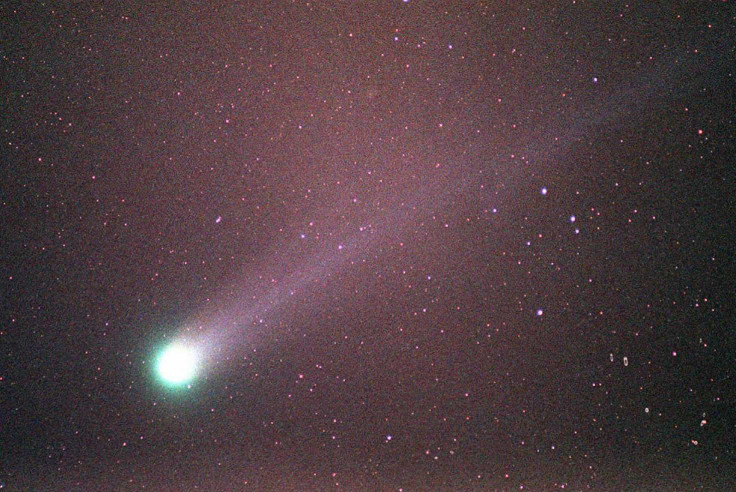New Comet May Become Visible To The Human Eye Next Week

KEY POINTS
- Comet NEOWISE will become bright enough to be spotted by the human eye starting next week
- The comet's brightness is increasing as it moves closer to the Sun
- An astronomer believes NEOWISE will not fragment like the comets SWAN and ATLAS
Astronomers revealed that a newly discovered comet could be bright enough to be spotted by the human eye starting next week. The icy object’s brightness is expected to increase as it continues to move closer towards the Sun.
The comet has been identified as C/2020 F3 or NEOWISE. It was discovered by NASA’s Wide-Field Infrared Survey Explorer (NEOWISE) telescope on March 27 earlier this year.
According to the recent observations on the comet, NEOWISE is currently moving toward the Sun. Michael Mattiazzo, an astronomer in Australia, was able to photograph the comet on June 10. He noted that during that time, the comet was almost bright enough to be spotted by the human eye.
Mattiazzo expects that as the comet proceeds with its current trajectory toward the Sun, its magnitude or overall brightness will continue to increase. The astronomer believes that the comet could become bright enough to be seen without the use of binoculars or telescopes starting next week.
“Pushing the limits of comet observing, I had to leave home to find a clear horizon,” Mattiazzo said, according to SpaceWeather.com. “When I took the picture, comet NEOWISE was very close to the Sun and only 5 degrees above the local horizon. Its visual magnitude was near +7.0, below the threshold for naked-eye visibility.”
Comet NEOWISE is expected to reach its closest distance from the Sun on July 3. Astronomers believe that it might be able to reach its brightest state on this date.
Due to its increasing brightness, comet NEOWISE can be compared to the other comets that caught the attention of the public in the past couple of months. The comets, known as SWAN and ATLAS, were supposed to reach magnitudes that are bright enough to be spotted from Earth without the use of special equipment.
Unfortunately, this didn’t happen as the two comets started to fragment when they approached the Sun. Although comet NEOWISE may end up suffering the same fate, Mattiazo believes that it will be able to survive its trip to Sun. Compared to comets SWAN and ATLAS, Mattiazo noted that NEOWISE’s gradual brightness is more stable.
“I'd say there's a 70% chance this comet will survive perihelion,” he stated. “Hopefully, comet NEOWISE could be a case of 'third time lucky' for northern hemisphere observers.”
© Copyright IBTimes 2025. All rights reserved.





















